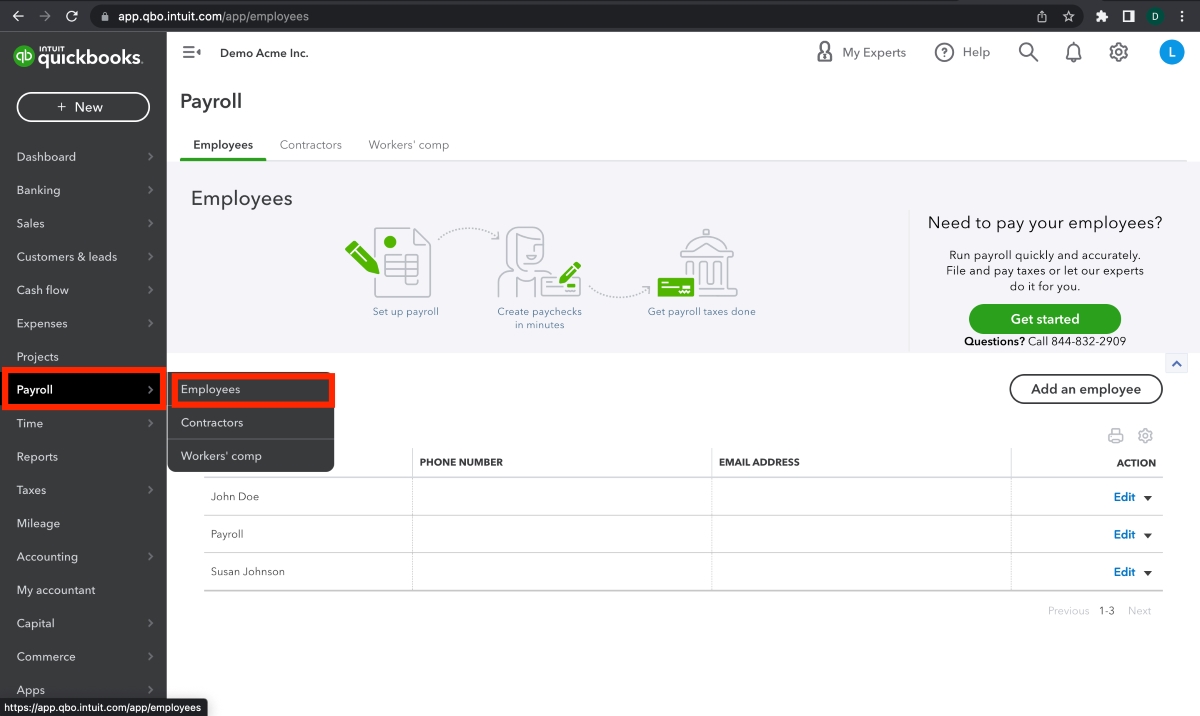Home>Finance>What Should A Firms Target Capital Structure Do


Finance
What Should A Firms Target Capital Structure Do
Modified: February 21, 2024
Discover the importance of a firm's target capital structure in finance and how it can optimize financial performance, maximize returns, and minimize risk.
(Many of the links in this article redirect to a specific reviewed product. Your purchase of these products through affiliate links helps to generate commission for LiveWell, at no extra cost. Learn more)
Table of Contents
- Introduction
- Definition of Target Capital Structure
- Importance of Target Capital Structure for Firms
- Factors Influencing the Choice of Target Capital Structure
- Benefits of Maintaining an Optimal Target Capital Structure
- Potential Risks and Challenges in Achieving the Target Capital Structure
- Strategies to Achieve and Maintain the Target Capital Structure
- Case Studies of Firms with Successful Target Capital Structure
- Conclusion
Introduction
When it comes to running a successful business, having a solid financial foundation is crucial. One key aspect of financial management that all firms need to consider is their target capital structure. The target capital structure refers to the ideal mix of debt and equity financing that a firm aims to maintain in order to optimize its financial performance.
Essentially, the target capital structure represents the long-term balance between a company’s debt and equity. It determines the proportion of a firm’s financing that comes from external sources (debt) and internal investments (equity). Finding the right balance is essential to support the firm’s operations, growth initiatives, and profitability.
The target capital structure of a firm serves as a roadmap for decision-making in terms of financing options and overall financial stability. Maintaining an appropriate target capital structure can provide several advantages, such as lower financing costs, increased value for shareholders, and improved financial flexibility.
This article will explore the concept of target capital structure in depth, highlighting its importance for firms and the factors that influence the choice of a target capital structure. Additionally, we will discuss the benefits of maintaining an optimal target capital structure and the potential risks and challenges involved. Finally, we will explore strategies that firms can employ to achieve and maintain their target capital structure, along with case studies of successful companies.
By understanding the significance of target capital structure and implementing effective strategies, firms can ensure their financial stability and position themselves for long-term success.
Definition of Target Capital Structure
The target capital structure of a firm refers to the ideal mix of debt and equity financing that the company aims to maintain in order to achieve its long-term financial goals. It represents the proportion of debt and equity used to finance a firm’s operations and investments.
Debt financing involves raising funds through borrowing, such as loans or issuing bonds, while equity financing involves raising funds by selling ownership shares in the company, typically through issuing stocks. The target capital structure determines the optimal balance between these two sources of funding.
The target capital structure is often expressed as a ratio or percentage, indicating the desired proportion of debt and equity. For example, a firm might aim for a target capital structure of 60% debt and 40% equity.
It’s important to note that the target capital structure is not a static ratio. It may change over time as the firm’s financial needs, market conditions, and business strategies evolve. Some firms may have a more aggressive target capital structure with higher levels of debt to fund growth opportunities, while others may have a more conservative target capital structure with lower levels of debt to prioritize financial stability.
The target capital structure serves as a guiding principle for financial decisions within the firm. It helps determine the optimal mix of financing sources that can minimize costs, maximize returns, and maintain the appropriate risk level. Achieving the target capital structure requires careful assessment of the firm’s financial needs, cost of capital, profitability, and risk tolerance.
It is worth noting that the target capital structure is not a fixed requirement but rather a flexible benchmark that can be adjusted based on various factors, including market conditions, industry trends, and the firm’s growth objectives.
In summary, the target capital structure represents the optimal combination of debt and equity financing that a firm aims to maintain in order to support its financial goals. It plays a critical role in shaping the overall financial profile of the company and is an essential aspect of effective financial management.
Importance of Target Capital Structure for Firms
The target capital structure is a crucial element for firms as it impacts various aspects of their financial performance and overall business operations. Here are some key reasons why the target capital structure is important:
- Cost of Capital: The target capital structure directly influences a firm’s cost of capital. Debt financing generally carries lower costs compared to equity financing, mainly due to the tax deductibility of interest payments. By maintaining an optimal target capital structure, firms can minimize their overall cost of capital, leading to increased profitability and higher returns for shareholders.
- Financial Flexibility: A well-defined target capital structure provides firms with financial flexibility. By balancing debt and equity, firms can tap into various sources of funding to meet their capital needs. This flexibility allows them to seize growth opportunities, invest in research and development, acquire new assets, and weather economic downturns more effectively.
- Business Risk Management: The target capital structure plays a vital role in managing business risk. By determining the appropriate level of debt and equity financing, firms can mitigate the risk of financial distress. Too much reliance on debt can lead to higher interest payments and financial instability, while too much equity may dilute ownership and weaken control. The target capital structure helps strike the right balance to ensure a manageable level of risk.
- Investor Confidence: The target capital structure influences investor confidence and perception of a firm’s financial health. A well-established target capital structure demonstrates a proactive approach to financial management and indicates that the firm is mindful of maintaining a healthy balance between debt and equity. This can enhance investor trust, attract potential investors, and support stock price stability and growth.
- Value Maximization: The target capital structure directly affects a firm’s value and market valuation. By optimizing the capital structure, firms can enhance their overall value and increase shareholders’ wealth. Striking the right balance between debt and equity financing can improve financial performance metrics such as return on investment, return on equity, and earnings per share.
By carefully determining and maintaining the target capital structure, firms can position themselves for sustainable growth, ensure financial stability, and achieve their long-term strategic objectives. It is crucial for firms to regularly evaluate and adjust their target capital structure based on changing market dynamics, business needs, and risk appetite.
Factors Influencing the Choice of Target Capital Structure
The choice of target capital structure is influenced by a variety of factors that are unique to each firm. Understanding these factors is essential for making informed decisions and establishing an optimal capital structure. Here are some key factors that influence the choice of target capital structure:
- Business Risk: The level of business risk faced by a firm plays a significant role in determining its target capital structure. Highly risky industries or businesses may opt for a lower proportion of debt to minimize the risk of financial distress. On the other hand, less risky industries may be able to handle a higher level of debt without compromising financial stability.
- Industry Norms: Industry-specific norms and practices can influence the choice of target capital structure. Different industries may have different benchmark capital structures that are considered optimal. Companies often analyze and compare their capital structure with industry peers to ensure they are in line with industry standards.
- Financial Flexibility: The financial flexibility required by a firm is an important consideration when setting the target capital structure. Companies aiming for aggressive expansion or rapid growth may prefer a higher proportion of equity to maintain flexibility in raising additional funds. Conversely, firms with stable cash flows and lower growth prospects may opt for more debt to minimize the dilution of ownership.
- Tax Considerations: The tax environment and applicable tax regulations have a significant impact on the choice of target capital structure. Interest payments on debt are usually tax-deductible, which makes debt financing more attractive from a tax perspective. Firms operating in jurisdictions with favorable tax policies may lean towards higher levels of debt financing.
- Market Conditions: Market conditions, including interest rates, availability of credit, and investor sentiment, can influence the choice of target capital structure. Low interest rates make debt financing more affordable, making it an attractive option for firms. Conversely, tight credit markets may force companies to rely more heavily on internally generated funds and equity financing.
- Growth Objectives: The growth objectives of a firm play a crucial role in determining the target capital structure. Companies with aggressive growth plans may opt for higher levels of debt to fund expansion initiatives. Conversely, firms with more conservative growth objectives may prioritize financial stability by keeping debt levels relatively low.
It is important for firms to assess these factors and strike a balance between debt and equity that aligns with their specific business circumstances, risk appetite, and long-term financial goals. Regular monitoring and adjustment of the target capital structure based on changing market dynamics and business needs will ensure its continued effectiveness.
Benefits of Maintaining an Optimal Target Capital Structure
Maintaining an optimal target capital structure offers several benefits for firms, contributing to their financial stability, growth, and overall success. Here are some key advantages of maintaining the right balance between debt and equity:
- Lower Financing Costs: An optimal target capital structure can lead to lower financing costs for firms. Debt financing usually carries lower interest rates compared to equity financing. By maintaining an appropriate level of debt, companies can effectively manage their interest expenses and minimize the cost of capital. This, in turn, can enhance profitability and increase returns for shareholders.
- Improved Return on Equity (ROE): Maintaining an optimal target capital structure can result in a higher return on equity for firms. By utilizing an appropriate mix of debt and equity, companies can leverage financial leverage to amplify returns on investment. This can lead to a higher ROE, reflecting the efficient use of capital and creating value for shareholders.
- Enhanced Financial Flexibility: A well-defined target capital structure provides firms with financial flexibility. By maintaining a balance between debt and equity, companies can tap into different sources of funding to meet their capital requirements. This flexibility allows them to pursue growth opportunities, invest in research and development, and withstand economic downturns more effectively.
- Optimal Risk-Return Tradeoff: Maintaining an optimal target capital structure allows firms to achieve an optimal risk-return tradeoff. A higher level of debt financing increases the risk profile of a company, but it also offers the potential for higher returns. By striking the right balance between debt and equity, firms can manage their risk exposure while maximizing returns and shareholder value.
- Improved Investor Relations: Maintaining an optimal target capital structure can enhance investor relations and attract potential investors. A well-structured capital base demonstrates a proactive approach to financial management and indicates that the firm is mindful of maintaining a healthy balance between debt and equity. This can improve investor confidence, support stock price stability and growth, and contribute to a positive reputation in the financial markets.
In summary, maintaining an optimal target capital structure is crucial for firms to achieve financial stability, lower financing costs, enhance profitability, and attract investors. By carefully managing their debt and equity levels, companies can position themselves for sustainable growth, effectively manage risk, and create long-term value for their stakeholders.
Potential Risks and Challenges in Achieving the Target Capital Structure
While maintaining an optimal target capital structure offers numerous benefits, firms may also face certain risks and challenges in achieving and sustaining their desired capital structure. It is important to be aware of these potential pitfalls and take proactive measures to mitigate them. Here are some key risks and challenges:
- Financial Market Volatility: Fluctuations in financial markets and economic conditions can pose challenges in achieving the target capital structure. Interest rate changes, credit market disruptions, and investor sentiment can impact the availability and cost of debt and equity financing. Firms need to monitor market conditions closely and be prepared to adjust their capital structure as needed to adapt to changing market dynamics.
- Debt Servicing: Maintaining a high level of debt carries the risk of increased interest payments and debt servicing obligations. Firms need to carefully manage their debt levels to ensure that they have sufficient cash flow to meet interest and principal repayments. Failure to meet debt obligations can lead to financial distress, credit rating downgrades, and restricted access to future financing.
- Capital Market Perception: Market perception and investor sentiment can impact a firm’s ability to achieve its target capital structure. Negative market perception, a poor credit rating, or unfavorable financial performance can lead to difficulties in raising debt or equity capital. Firms need to build a strong reputation and maintain transparent and effective communication with investors to instill confidence and support market confidence in their capital structure.
- Regulatory Constraints: Regulatory frameworks and constraints can significantly influence a firm’s target capital structure. Legal and regulatory requirements related to debt-to-equity ratios, industry-specific regulations, and compliance obligations may limit the flexibility in financing options and impact the ability to achieve the desired capital structure. Firms need to stay up-to-date with applicable regulations and ensure compliance while seeking to optimize their capital structure.
- Changes in Business Operations: Changes in a firm’s business operations, such as mergers, acquisitions, or diversification strategies, can impact the target capital structure. These changes may require additional financing, which could alter the debt-to-equity ratio. Firms need to carefully evaluate the impact of any significant changes in their operations on their capital structure and make appropriate adjustments to maintain an optimal balance.
Addressing these risks and challenges requires careful financial planning, regular assessment of market conditions, and proactive management of debt and equity levels. Firms should conduct thorough financial analyses, stress testing, and scenario planning to identify potential risks and develop contingency strategies. Additionally, maintaining open lines of communication with lenders, investors, and regulatory bodies is crucial to navigate any potential challenges and ensure long-term financial stability.
Strategies to Achieve and Maintain the Target Capital Structure
Achieving and maintaining the desired target capital structure requires strategic financial planning and disciplined execution. Here are some effective strategies that firms can implement:
- Comprehensive Financial Analysis: Conduct a thorough analysis of the firm’s financial position, including cash flow projections, profitability, and risk assessments. This analysis will provide insights into the appropriate level of debt and equity financing needed to achieve the target capital structure. Consider factors such as industry norms, growth objectives, and risk tolerance when determining the optimal mix.
- Optimize Debt and Equity Issuance: Carefully plan the issuance of debt and equity instruments to align with the target capital structure. Evaluate the timing, cost, and terms of debt issuance to secure favorable financing. Balance equity issuance to avoid dilution of ownership while raising necessary funds. Regularly assess the debt maturity profile to ensure a suitable distribution of debt repayment obligations.
- Monitor and Manage Debt Levels: Keep a close eye on the firm’s debt levels and manage them effectively. Regularly assess the debt-to-equity ratio and debt-to-capitalization ratio to ensure it aligns with the target capital structure. Explore opportunities to refinance existing debts with more favorable terms or consolidate debt to improve interest rates and reduce financial obligations.
- Optimize Working Capital Management: Efficient working capital management can contribute to achieving the target capital structure. Streamline inventory, accounts receivable, and accounts payable processes to improve cash flow and reduce the need for short-term debt financing. Implement effective cash flow forecasting and liquidity management practices to ensure timely payment of debt obligations.
- Diversify Funding Sources: Reduce reliance on a single source of funding to achieve a more balanced and resilient capital structure. Explore alternative financing options such as venture capital, private equity, or strategic partnerships. Diversifying funding sources can provide greater flexibility and mitigate the risk associated with relying heavily on a particular type of financing.
- Regularly Review and Adjust: Continuously monitor the firm’s financial performance and regularly review the target capital structure to ensure it remains appropriate. Assess changes in market conditions, industry trends, and business operations that may warrant adjustments to the capital structure. Stay updated with regulatory changes that may impact the firm’s financing options and work proactively to comply with any necessary adjustments.
Implementing these strategies requires careful financial planning, coordination across departments, and ongoing monitoring. It is essential to involve finance professionals, such as financial analysts or chief financial officers, to ensure a comprehensive understanding of the firm’s financial position and to make informed decisions regarding the target capital structure.
By adopting these strategies, firms can effectively achieve and maintain their desired target capital structure, optimizing their financing mix to support growth, profitability, and long-term financial stability.
Case Studies of Firms with Successful Target Capital Structure
Examining case studies of firms with successful target capital structures can provide valuable insights and inspiration for other businesses. Here are two examples:
- Company X: Company X, a global manufacturing firm, has consistently maintained a successful target capital structure. Their strategy involves a balanced mix of debt and equity financing that aligns with their growth objectives and risk appetite. The company actively monitors market conditions and adjusts their capital structure accordingly. They have effectively utilized debt financing to fund expansion initiatives while maintaining healthy debt-to-equity ratios. Additionally, their strong cash flow management and efficient working capital practices have contributed to their financial stability. As a result, Company X has been able to invest in research and development, expand into new markets, and achieve sustainable growth, all while ensuring optimal returns for shareholders.
- Company Y: Company Y, a technology startup, successfully achieved its target capital structure through strategic financing practices. Recognizing the need for sufficient capital to fuel their rapid growth, they secured venture capital financing in the early stages to fund their product development and market expansion. As the company matured, they gradually accessed debt financing to diversify their funding sources. Company Y maintained a focus on profitability and carefully managed their financial risks. By striking the right balance between debt and equity, they achieved a sustainable target capital structure that supported their ambitious growth plans. As a result, they were able to attract further investment, increase their market valuation, and establish a strong foothold in their industry.
These case studies highlight the importance of strategic financial planning, adaptability to market conditions, and effective management of debt and equity levels. These firms demonstrate the benefits of maintaining a target capital structure that is aligned with their business objectives and risk profiles. By carefully assessing their financing needs, optimizing their funding sources, and regularly reviewing and adjusting their capital structure, these companies have achieved financial stability, supported growth initiatives, and enhanced shareholder value.
It is important for businesses to study such successful case studies, understand their strategies, and adapt them to their own unique circumstances. By learning from the experiences of these firms, companies can gain valuable insights into how to achieve and maintain their own target capital structures for long-term success.
Conclusion
The target capital structure is a critical component of financial management for firms across industries. By maintaining an optimal balance between debt and equity financing, companies can achieve financial stability, lower financing costs, and enhance their overall performance.
In this article, we have explored the definition of target capital structure and its importance for firms. We have discussed the factors that influence the choice of target capital structure, such as business risk, industry norms, and financial flexibility. Additionally, we have highlighted the benefits of maintaining an optimal target capital structure, including lower financing costs, improved return on equity, enhanced financial flexibility, and increased investor confidence.
We have also addressed the potential risks and challenges that firms may face in achieving and maintaining their target capital structure, including market volatility, debt servicing obligations, regulatory constraints, and changes in business operations. By understanding these risks, firms can develop strategies to mitigate them effectively.
Furthermore, we have provided strategies that firms can implement to achieve and maintain their target capital structure. Key strategies include comprehensive financial analysis, optimizing debt and equity issuance, monitoring and managing debt levels, optimizing working capital management, diversifying funding sources, and regularly reviewing and adjusting the target capital structure.
Lastly, we have presented case studies of firms that have successfully achieved their target capital structures. These examples demonstrate the importance of strategic financial planning, adaptability to market conditions, and efficient management of debt and equity levels.
In conclusion, maintaining an optimal target capital structure is crucial for firms to achieve financial stability, support growth initiatives, and maximize shareholder value. By carefully evaluating their financing needs, aligning their funding sources, and regularly reviewing and adjusting their capital structure, companies can position themselves for long-term success in the dynamic business environment.














